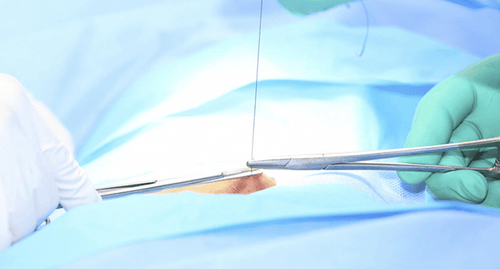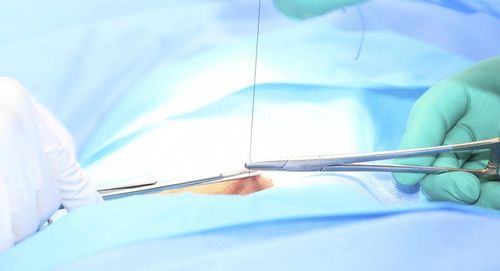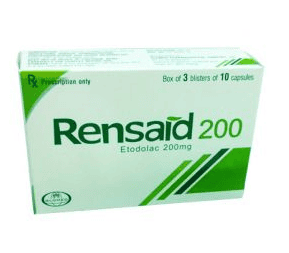This is an automatically translated article.
The article was professionally consulted by Specialist Doctor II Lai Thi Nguyet Hang - Department of Obstetrics and Gynecology - Vinmec Ha Long International Hospital.The hormonal and physical changes associated with pregnancy and delivery can increase the risk of complications or pelvic pain. Accordingly, damage to the pelvis, pelvic floor dysfunction, as well as to the pelvic muscles and connective tissues can be prolonged. This can cause discomfort, pain, and functional impairment such as loss of bladder control and urinary incontinence. This article will provide you with helpful information on some of the pelvic rehab treatments that can help relieve uncomfortable postpartum symptoms.
1. What is Pelvic Rehabilitation Treatment?
The pelvic floor is a network of muscles, ligaments, and tissues that stretches across the pelvis that perform the important job of supporting the pelvic organs including the uterus, vagina, bladder, and bowels. The pelvic floor muscles allow you to hold urine and stools and release them when you need them. These organs also help you contract and relax your vagina during sex.There are gaps in the pelvic floor for the urethra, vagina and anus to pass through. Pregnancy and childbirth relax the pelvic floor muscles. The baby's weight, hormones that loosen tissues, and labor efforts can all put pressure on this part of a mother's body.
When the pelvic floor muscles are tight or weak, they can cause symptoms of discomfort or even pain, you may experience urinary incontinence, gas, or less commonly, incontinence, dysfunction. pelvic floor function.
Pelvic rehabilitation is a type of physical therapy that can be very helpful for postpartum mothers. Daily postpartum pelvic floor exercises help mothers regain control of their bladder and bowels after giving birth effectively. Your doctor and physical therapist will assess your symptoms and provide professional help to improve your pelvic floor.

2. What is pelvic rehabilitation like?
Pelvic rehabilitation physical therapy involves several different types of techniques that focus on the muscles and connective tissue of the pelvic floor and abdomen. The obstetrician will work closely with the rehabilitation team. The physiotherapist and chiropractor will work together to create a program tailored to your needs, which typically includes pain management, pelvic and spine adjustments, massage, exercise, and more. Strengthening muscles, stretching, correcting posture, guiding daily activities and helping postpartum women prepare to return to daily activities safely.Based on your specific health condition, the team can recommend a number of training sessions to help the body recover completely and safely. For a mother with some of the more complicated acute postpartum symptoms, the obstetrician may prescribe the immediate initiation of a pelvic rehabilitation program:
The physiotherapist uses the technique chiropractic will help relieve back, neck or leg pain;
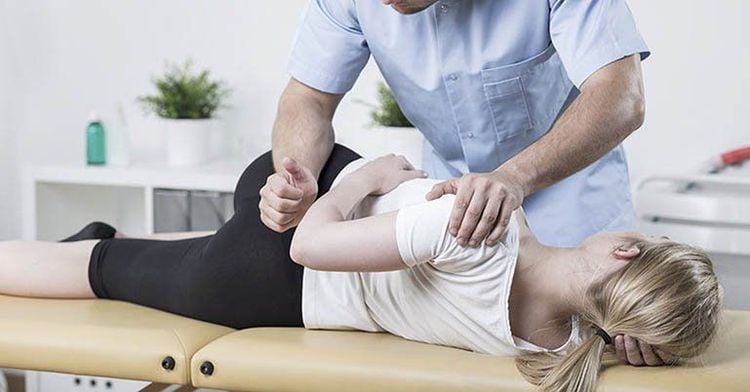
3. What postpartum problems can be helped with pelvic rehabilitation?
Every mother has a different problem related to the pelvic floor. These problems are especially common in postpartum mothers, and they can persist beyond the first 6 months or longer in some women.Dysuria: Women with urinary incontinence leak urine when coughing, sneezing, or running. Some women feel the urge to urinate frequently or suddenly, even if their bladder is not full. Some people are unable to regulate the flow of urine to their liking or completely empty their bladder while urinating. Incontinence: Many postpartum women have difficulty controlling gas or bowel movements. Perineal pain: This is common in postpartum women, especially those who have had an episiotomy vaginally or are recovering from an episiotomy. Narrow pelvic floor causes some new mothers to experience persistent perineal pain, even after their wound has healed. Pelvic pain: Some women experience pain during sex for months or even years after giving birth. And some have chronic pain, itching or burning in their vulva, the tissue around the vaginal opening. It makes you very uncomfortable when wearing tight clothes and even underwear. Others have pain while urinating. Pelvic organ prolapse: When pregnancy and childbirth weaken the pelvic floor muscles, one or more of the organs that support the uterus, bladder, and intestines can slip out of place (also known as prolapse). genital ). Rehabilitating these muscles can help prevent or improve pelvic floor muscle weakness.
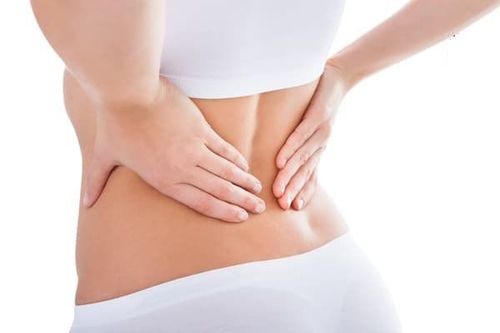
4. Kegels' help?
Kegels are exercises you can do to support your pelvic floor muscles. Your doctor may have recommended Kegels to relieve urinary symptoms. Kegels help some women, especially those with weak pelvic floor muscles, who may leak urine.4.1. Exercises after giving birth
Bed exercise:Ankle flexion exercise: repeat the movement 6 times, perform 5-6 times a day When starting to move in bed, you can bend one leg gently and slowly, Do one leg at a time and alternate. Repeat the movement 4 times, do 5-6 times / day. The pelvis can be gently raised to help relieve back pain. Repeat the movement 4 times, do 5-6 times a day To reduce swelling or pain of the pelvic floor, as well as pain due to hemorrhoids, can apply an ice pack wrapped in a damp towel, 10 minutes every hour, for 24- 48 hours after birth. After applying ice, in a lying position, practice creating a "contraction rhythm" of the pelvic floor 3-4 times to help blood circulation and healing. Contract your pelvic floor muscles gently, then release. Do not hold the pelvic floor muscles in or "stop urinating". Suction the pelvic floor before coughing or sneezing. If you have a cesarean section, do the same, but use your hand to support the abdominal incision.

Immediately after giving birth, the first time you want to get out of bed, ask your midwife for help to prevent the risk of falling and prevent injury if any.
Because the muscles are still weak, to avoid pain in the spine and abdomen, turn to one side and apply the method of moving from the side position that the physiotherapist recommended during pregnancy.
Attention: Turning to one side to get out of bed do not sit up straight while lying on your back.
Sit in a chair
Sit in a comfortable chair for short periods of time and while breastfeeding . Avoid sitting on a ring-shaped pillow, although this helps to reduce pelvic floor discomfort. Relax your body with soothing music to help relieve tension in your shoulders and neck. Take the time to rotate the shoulder joint forward and backward a few times. Go to the bathroom
Sit comfortably on the toilet, keeping your waist flexed as you lean forward from your hip joints. Place your hands on your thighs to help your abdomen relax forward. Breathe slowly but without increasing pressure on the pelvic floor. Do not hold your breath. Support the incision and perineum as needed. Method 1: Lift your heels off the floor and bend forward to relieve pressure on the pelvic floor. Method 2: Use a footrest and hip flexion to protect the pelvic floor.
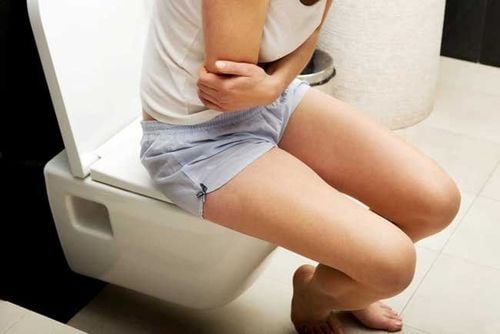
4.2. After being discharged from the hospital
Mothers, please start the exercise with a supine or side position as follows:Inhale and as you exhale, gently squeeze the pelvic floor muscles. Try not to use your abs. Just focus on pulling your pelvic floor muscles up and pushing it in as if you were trying to hold back urine and fart. Hold the squeeze for 4 or 5 seconds, while continuing to breathe in and out as usual. If you're squeezing your upper abs (above your navel) or your butt, you're using too much force Once you get used to it, you should try every time. Squeeze the pelvic floor for 8-10 seconds while breathing normally.
If you lose your breath halfway, stop and start over. When you can squeeze for 10 seconds, try doing 5 times in a row. Quick squeezes help you tighten muscles when coughing, sneezing, laughing, or lifting something heavy.
You should feel the muscles release at the end of each squeeze. If you don't feel that way you should relax your muscles before the end of the count. In this case, reduce the amount until your muscles can relax and start over.
Slowly start with up to 10 squeezes in 10 seconds, followed by 10 quick squeezes, three times per day. Try to tighten the muscles as much as you can, but maintain a normal breathing rate.
You may not feel much when doing the exercises for the first few days. But the efforts will pay off over time. It can take anywhere from 6 to 12 weeks for muscle mass to start building up, so try to be patient.
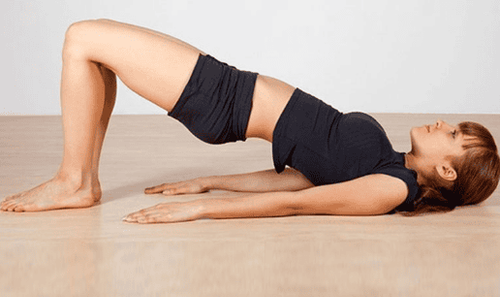
You can choose Vinmec International General Hospital as the address for examination and treatment of postpartum pelvic rehabilitation. Vinmec's Rehabilitation Department has strengths in Rehabilitation and treatment of musculoskeletal and spinal diseases, pediatrics, obstetrics and gynecology, inpatient and outpatient care, helping customers can quickly improve health after surgery, caesarean section.
Besides, Vinmec is equipped with a system of modern machinery and equipment, effectively supporting the treatment process to achieve a high success rate, helping musculoskeletal, musculoskeletal, and spinal nerves to restore function. ability and mobility. Especially at VInmec, there are many good, highly skilled doctors with full practice certificates, along with a team of well-trained technicians who are very dedicated in the process of treatment and rehabilitation. The ability to perform the treatment and rehabilitation process for good results, meeting the needs and desires of customers.
Please dial HOTLINE for more information or register for an appointment HERE. Download MyVinmec app to make appointments faster and to manage your bookings easily.
Reference source: babycenter.com






